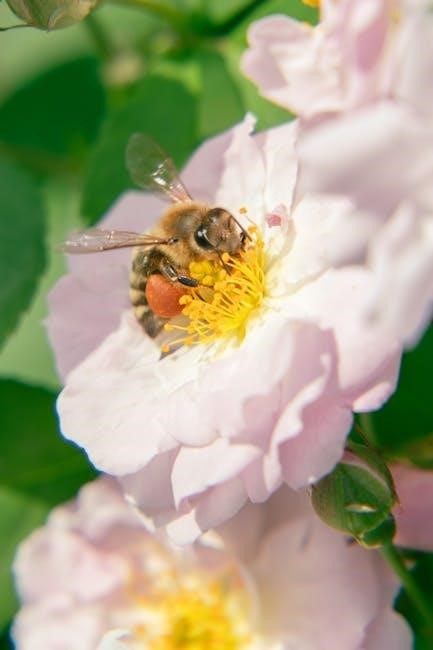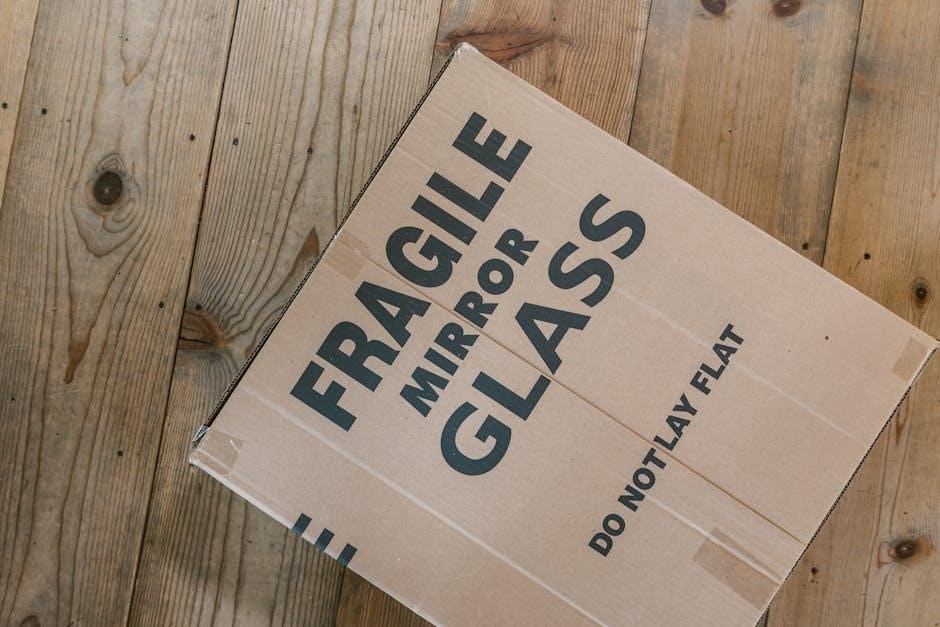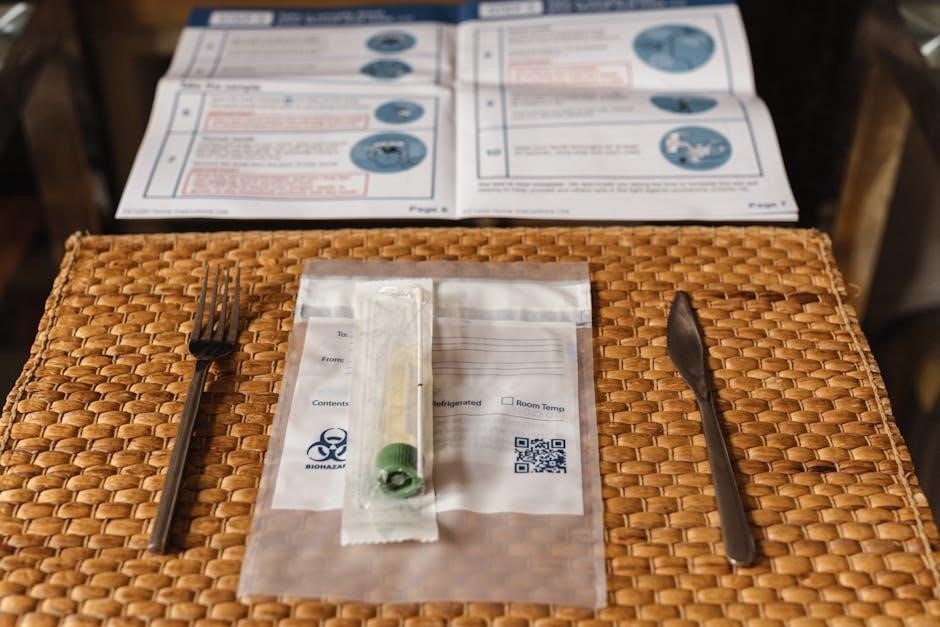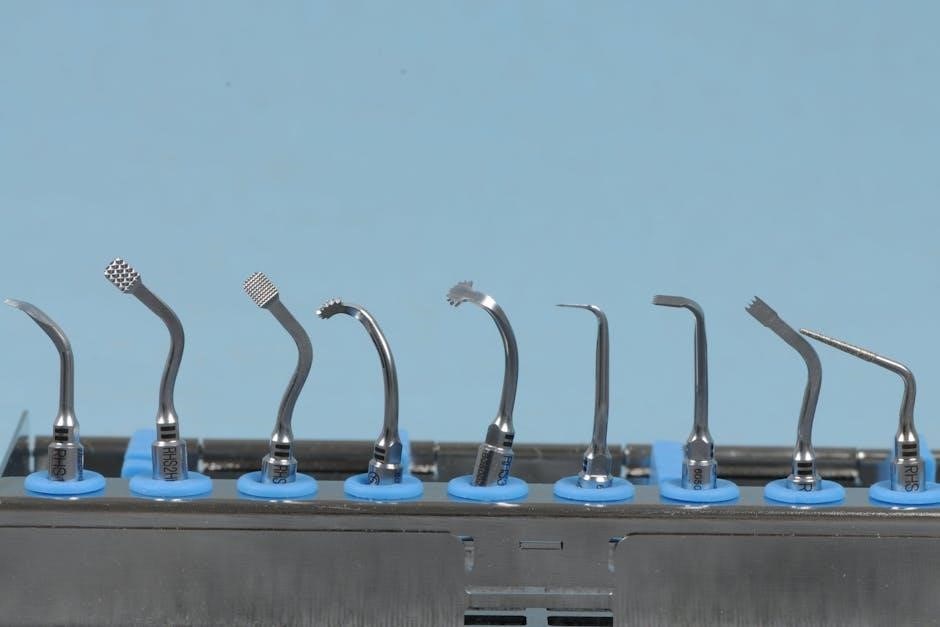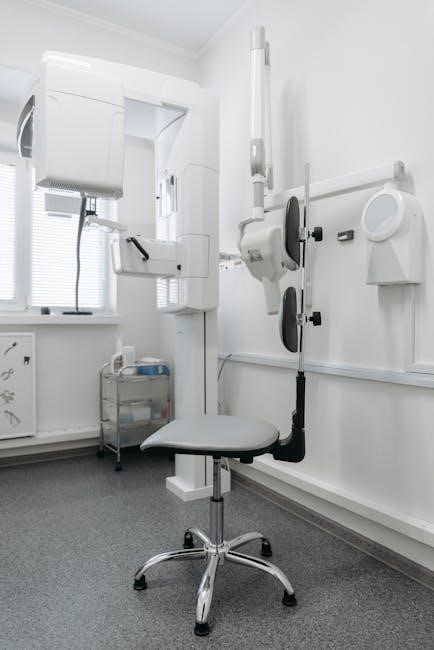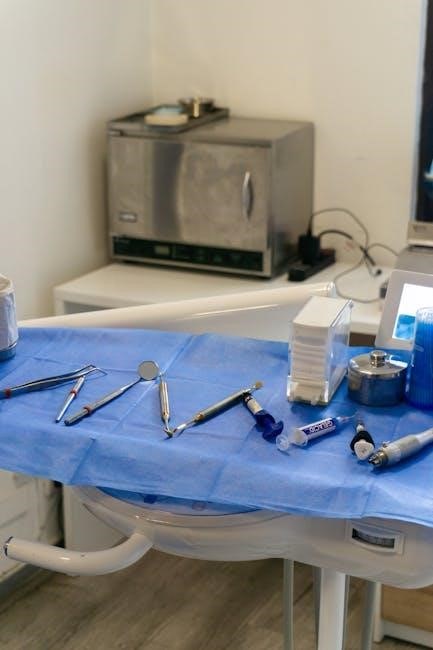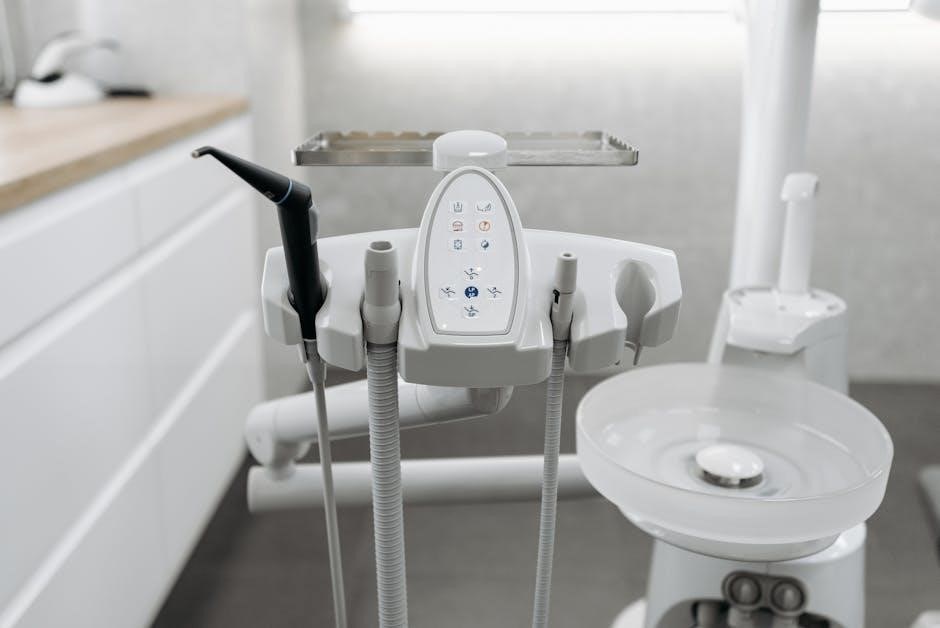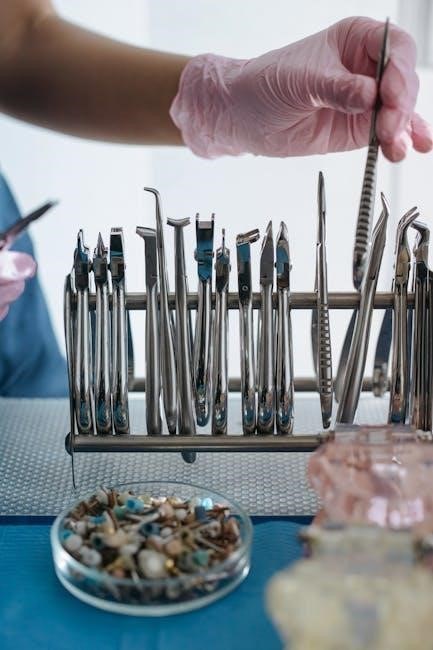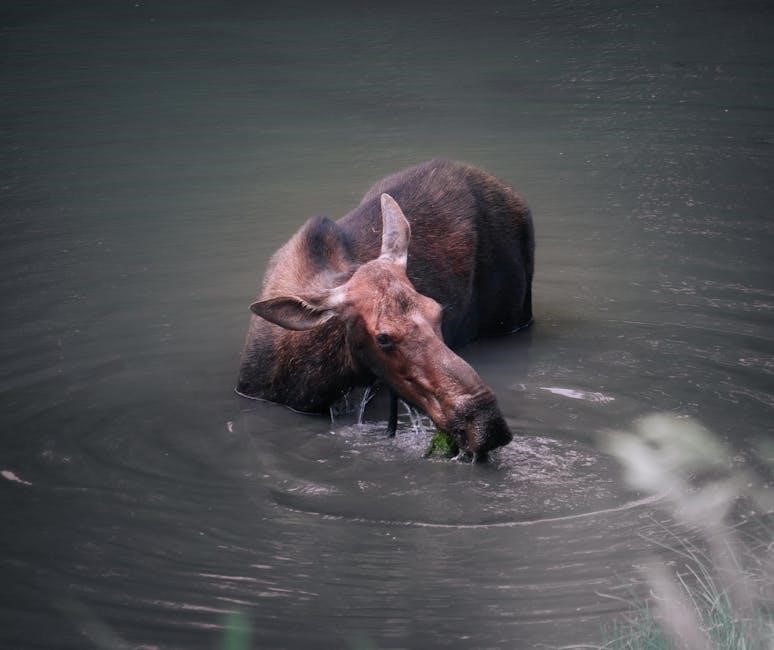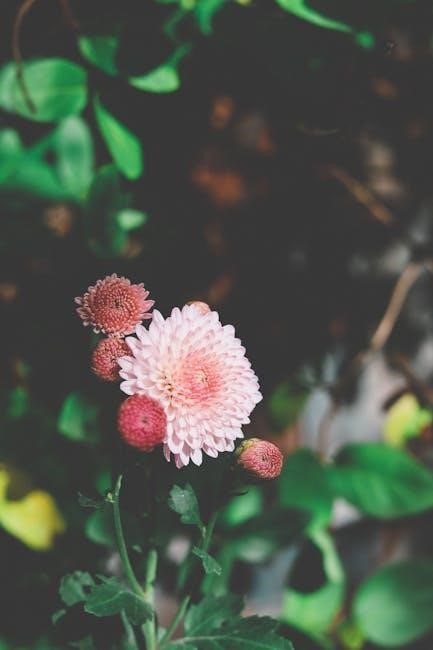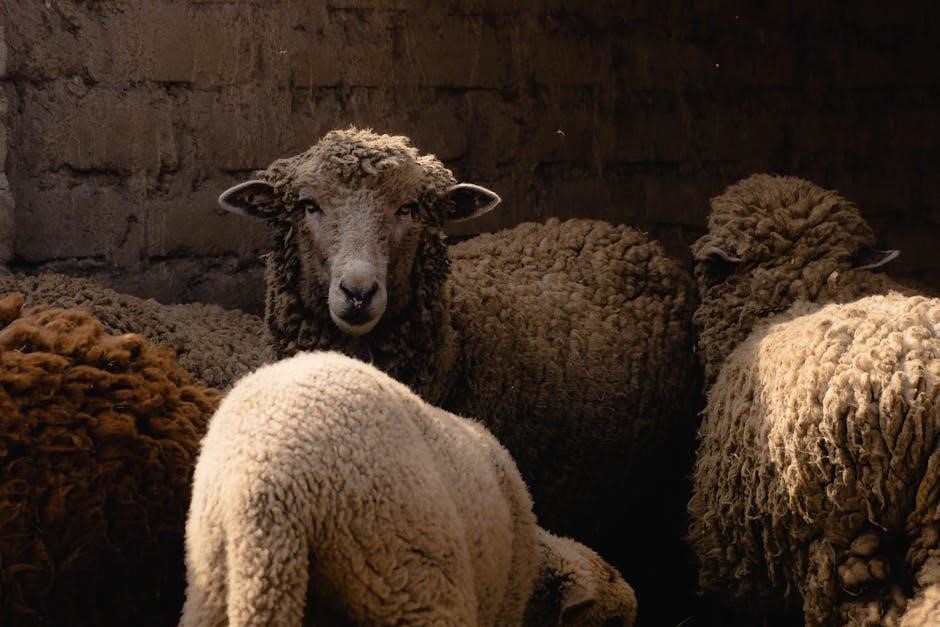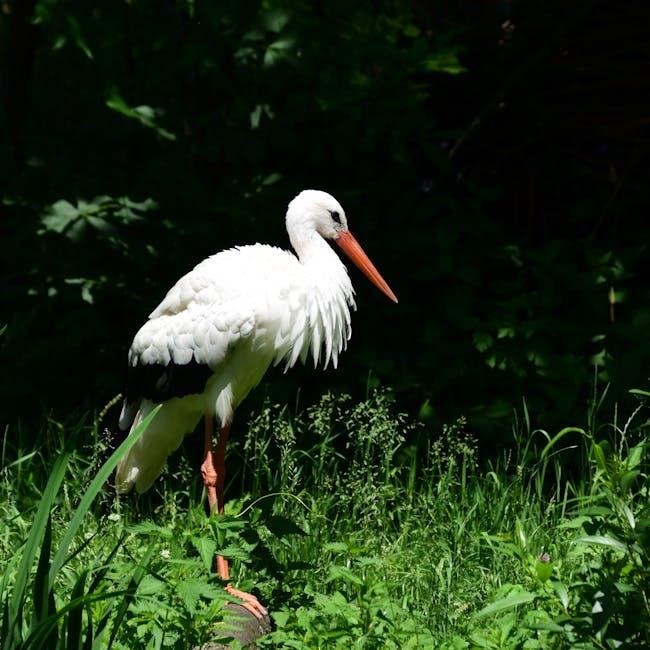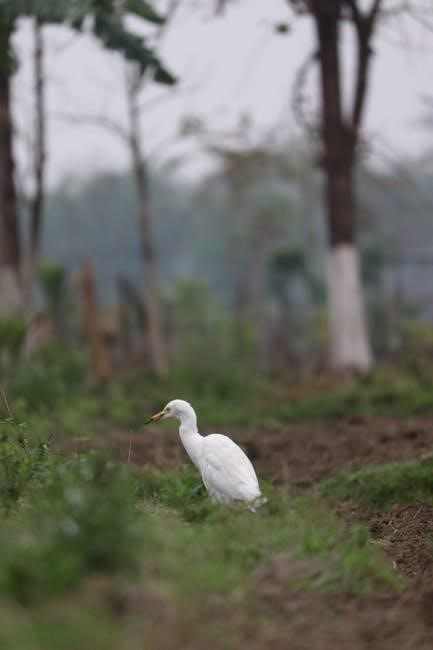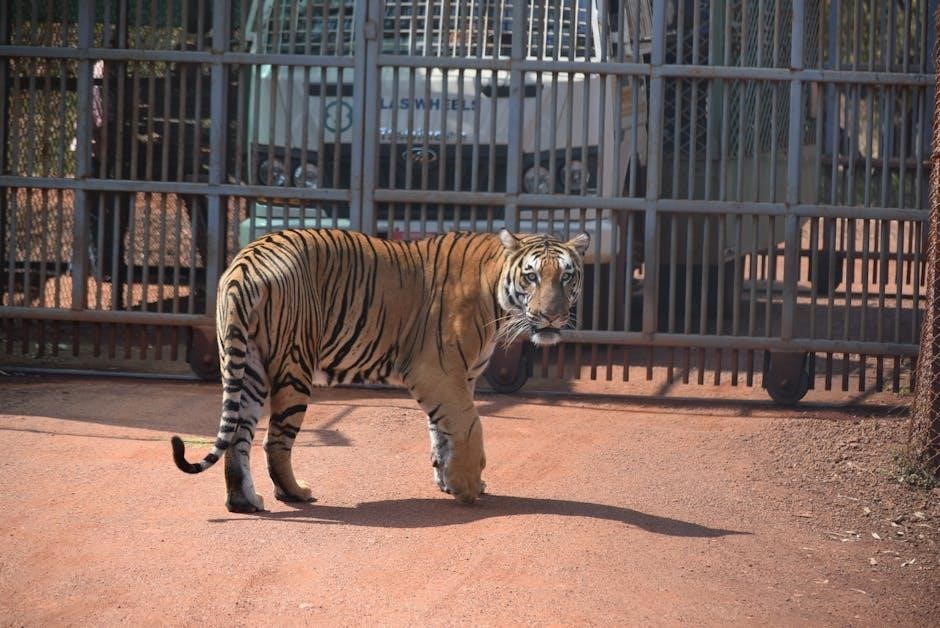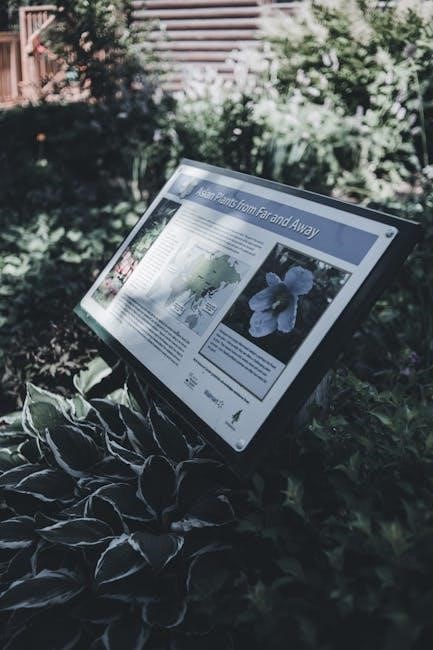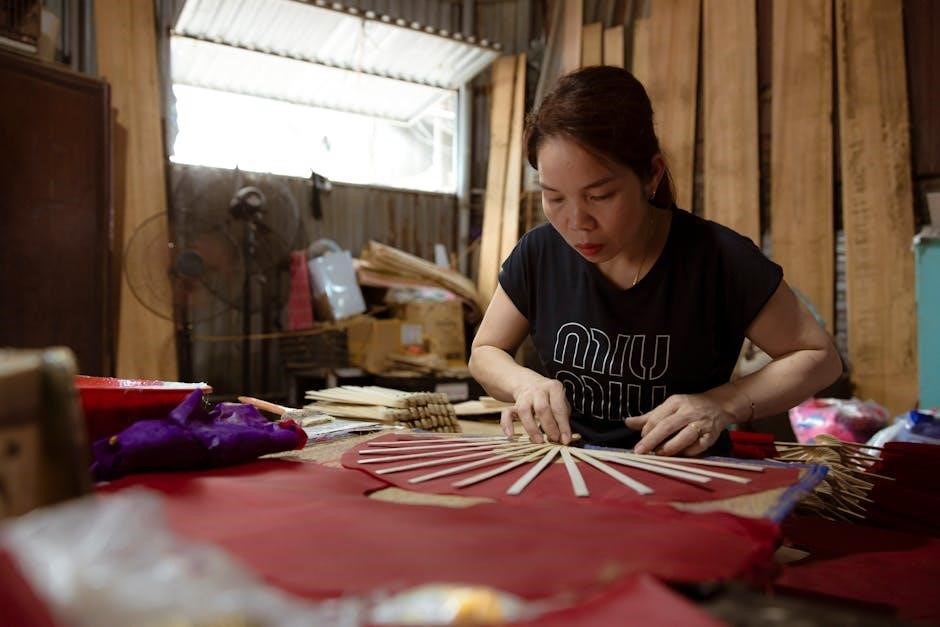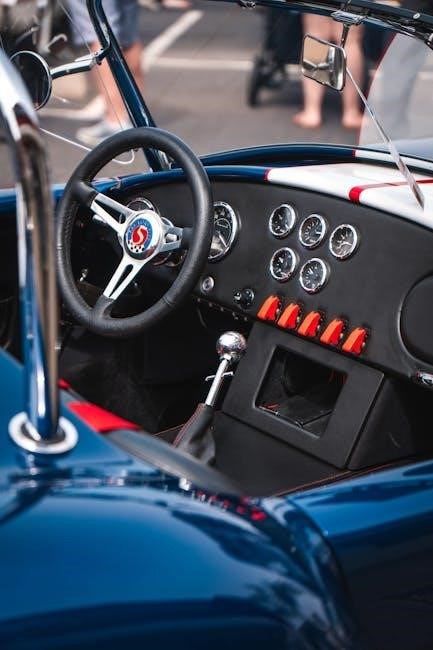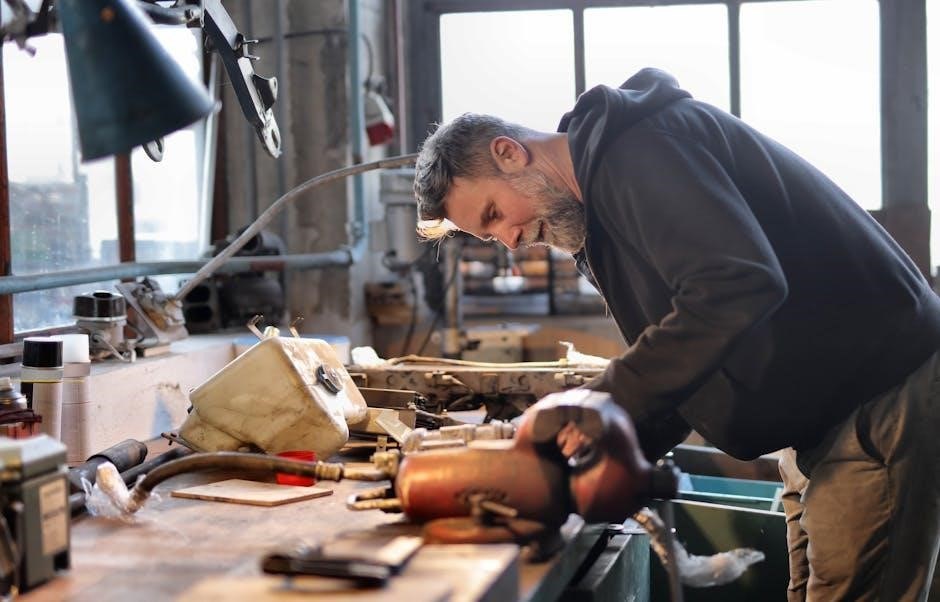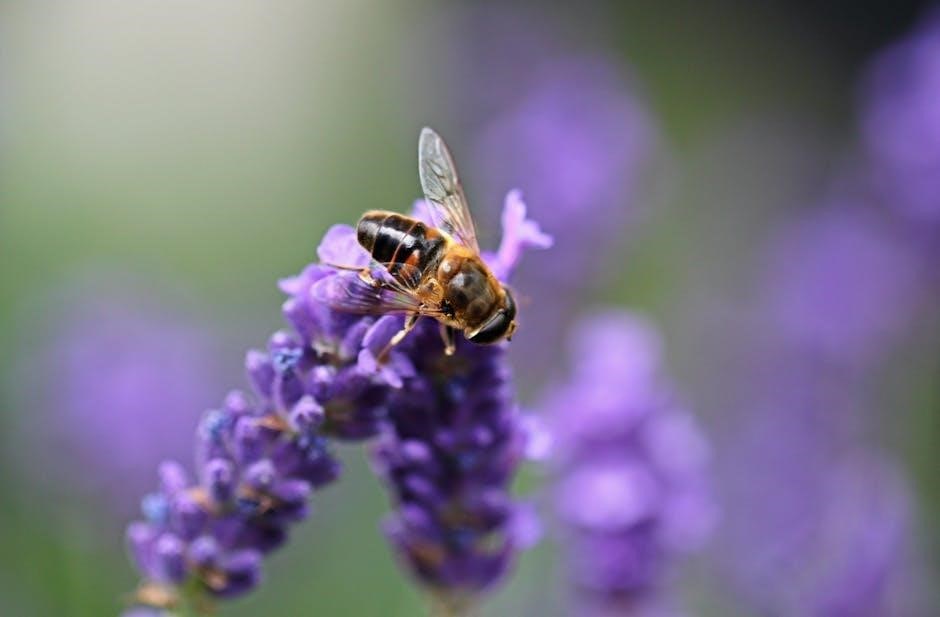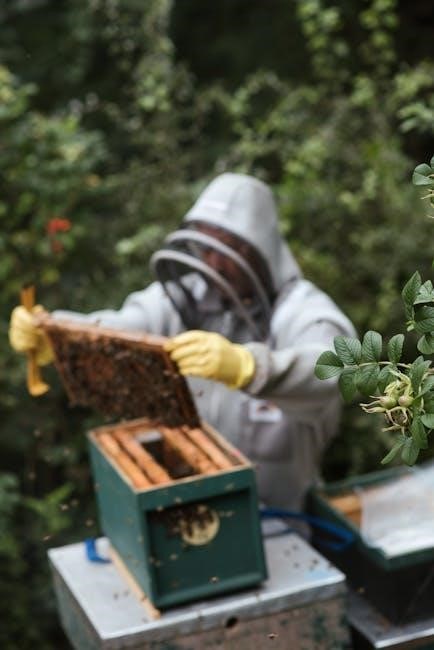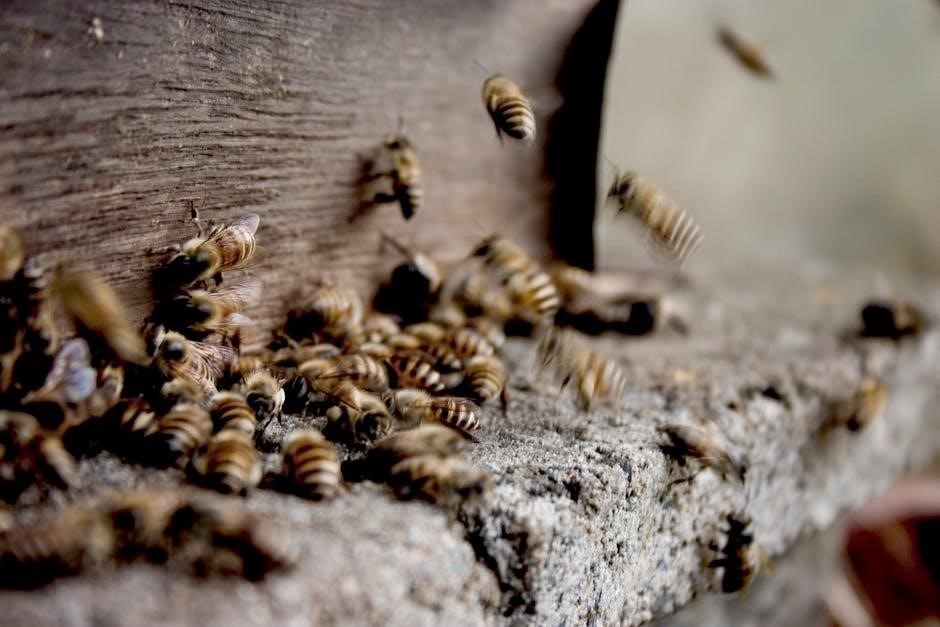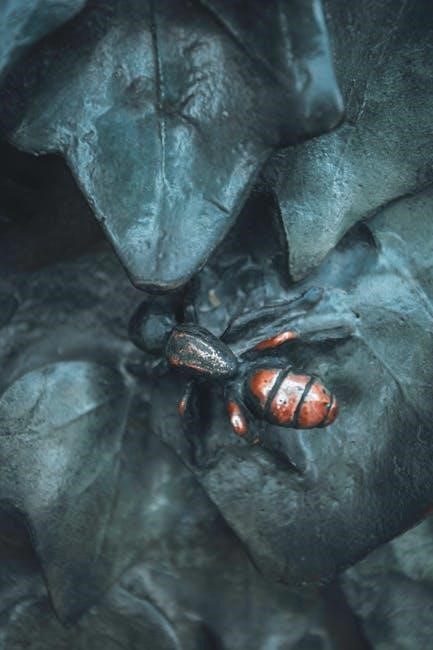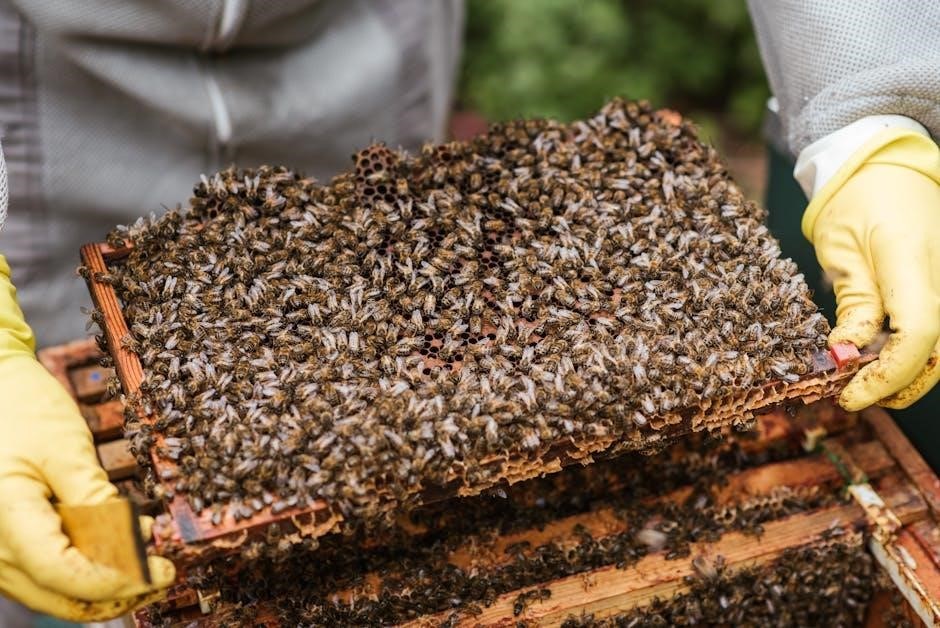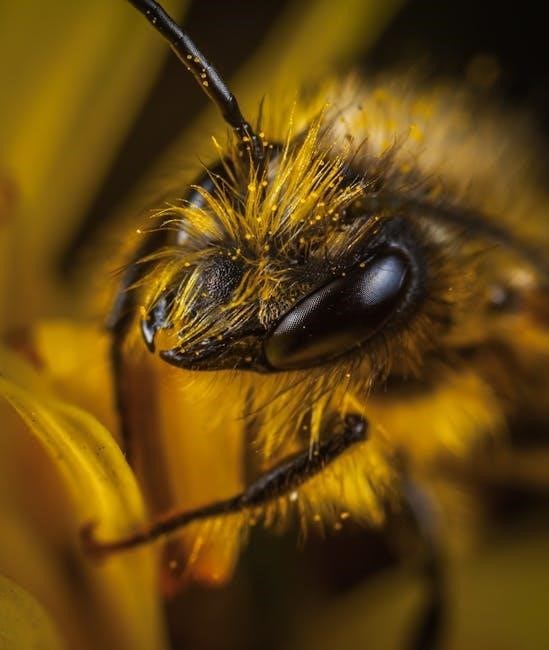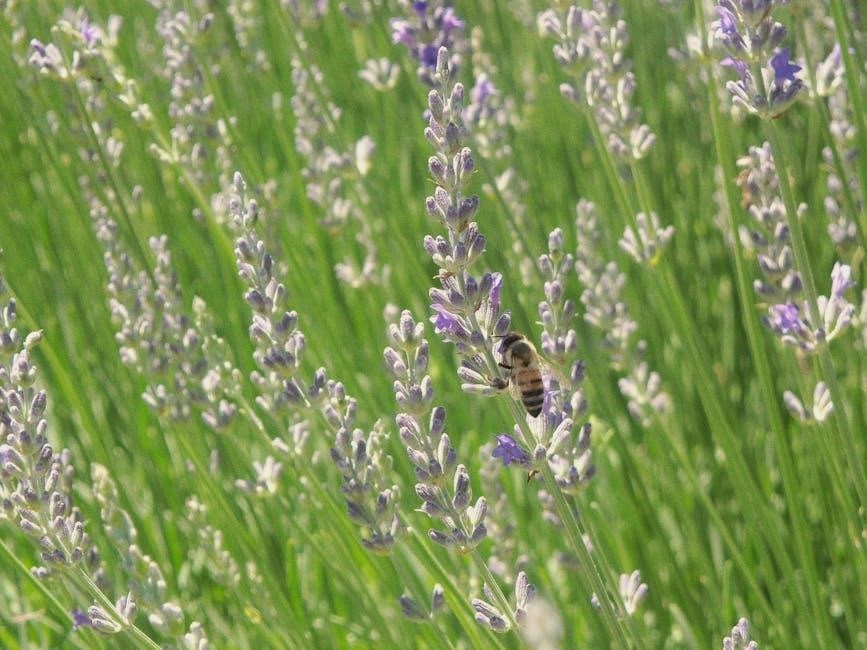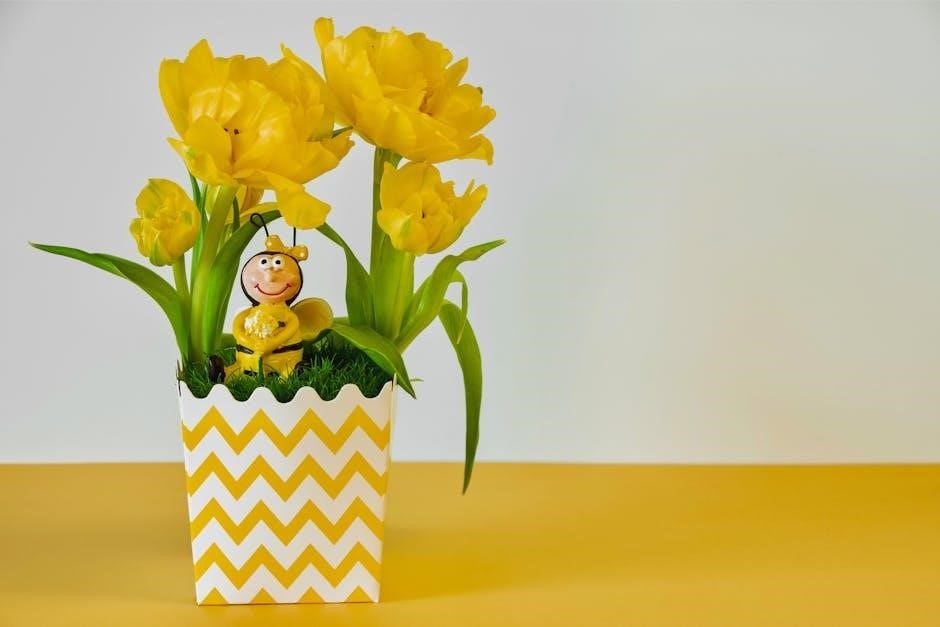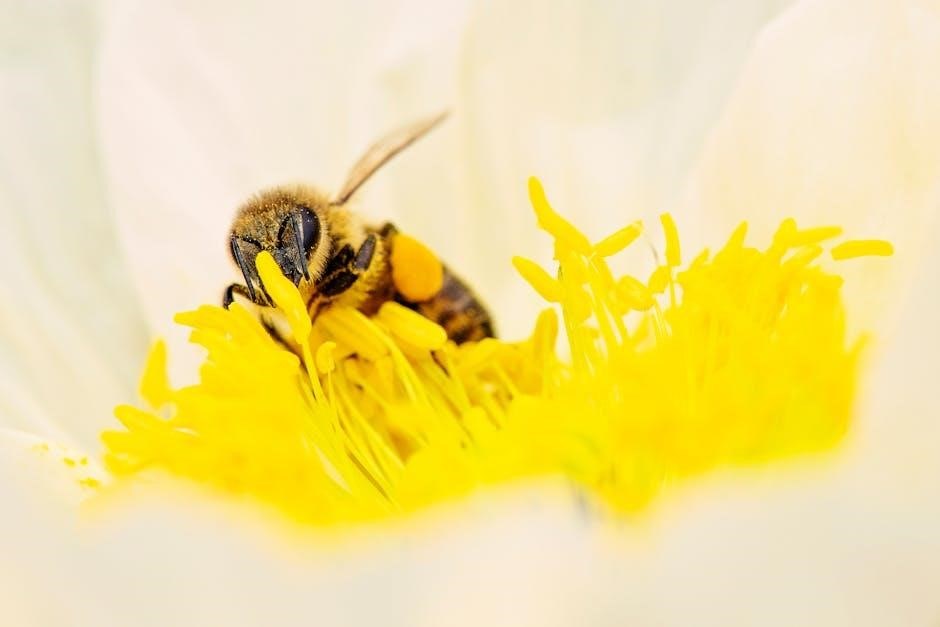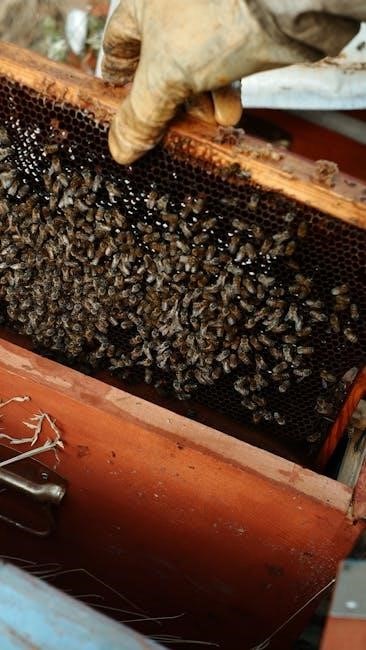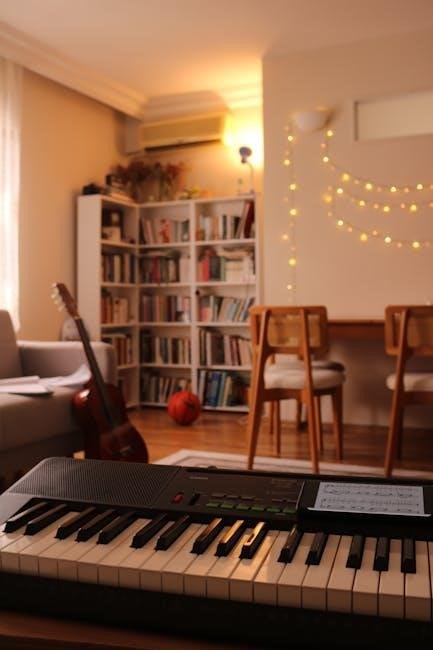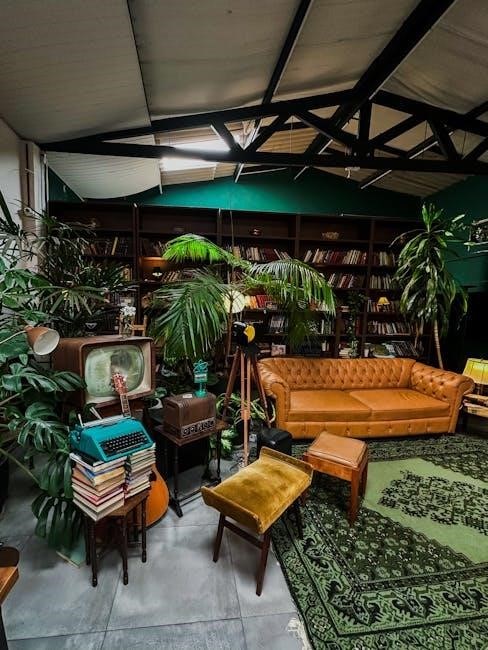Stingless bee hive design focuses on creating optimal habitats for these vital pollinators‚ emphasizing materials‚ climate adaptability‚ and colony health. PDF resources highlight innovative designs and traditional methods‚ ensuring hive structures align with ecological needs while addressing challenges like pest control and honey harvesting. This section explores the foundational principles of hive design‚ blending biology with practical construction techniques to support thriving stingless bee colonies worldwide.
Overview of Stingless Bees and Their Importance
Stingless bees are vital pollinators‚ playing a crucial role in maintaining ecosystems and agricultural productivity. Unlike honey bees‚ they are smaller and live in colonies with complex social structures. These bees are essential for pollinating various crops and wildflowers‚ contributing to biodiversity and food security. Their honey and propolis are highly valued for medicinal and culinary uses. Stingless bees are also eco-friendly‚ relying on natural resources without causing environmental harm. Understanding their biology and behavior is crucial for designing hives that support their health and productivity. Their importance extends beyond ecology to economic and cultural significance‚ making them a focus of conservation and sustainable beekeeping practices worldwide.
History and Evolution of Hive Design for Stingless Bees
The history of stingless bee hive design traces back to traditional practices‚ with early designs mimicking natural nesting sites like hollow tree trunks. Indigenous communities developed simple‚ eco-friendly hives using local materials. Over time‚ modern innovations incorporated new materials and structures‚ enhancing colony health and honey production. Traditional hive designs‚ such as those used in Australia and Ethiopia‚ have influenced contemporary approaches. The evolution of hive design reflects a deeper understanding of stingless bee biology and environmental needs. Historical methods have been refined to address challenges like pest control and climate adaptability‚ ensuring sustainable beekeeping practices. This progression highlights the importance of blending tradition with innovation to support these vital pollinators.
Why Hive Design Matters for Stingless Bee Colonies
Hive design is critical for the health and survival of stingless bee colonies‚ as it directly impacts their ability to thrive. Properly designed hives provide optimal conditions for brood rearing‚ honey storage‚ and colony growth. Materials like wood are often preferred for their ability to regulate temperature and humidity‚ mimicking natural nesting sites. A well-structured hive also protects colonies from pests and diseases‚ which are significant threats. Additionally‚ hive design influences the ease of access for beekeepers‚ allowing for monitoring and maintenance without disrupting the colony. Ultimately‚ a thoughtfully designed hive ensures the colony’s ecological balance and productivity‚ making it essential for successful stingless beekeeping. By addressing these factors‚ hive design plays a pivotal role in sustaining these vital pollinators.
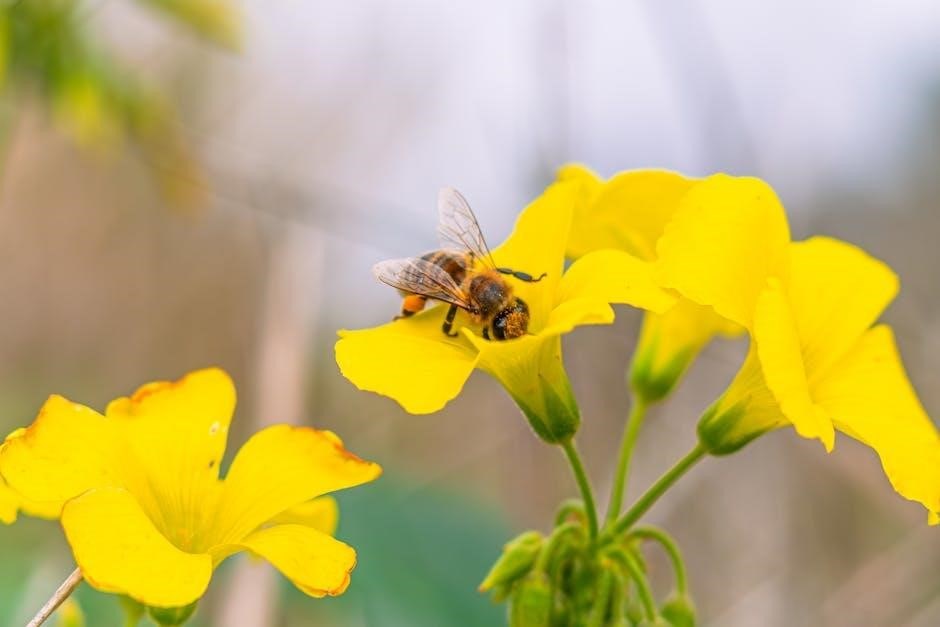
Key Considerations in Stingless Bee Hive Design
Materials‚ climate adaptability‚ and features preventing pest infiltration are crucial. Hives must ensure sustainability and align with stingless bees’ natural behavior‚ supporting colony health and productivity effectively.
Understanding the Biology and Behavior of Stingless Bees
Stingless bees are highly social insects with complex colony structures. Their biology revolves around queen bees‚ workers‚ and males‚ each with distinct roles. These bees are known for their non-aggressive nature and unique communication methods. They construct hives using wax produced from their own bodies‚ creating intricate honeycombs for brood rearing and honey storage. Their behavior includes cooperative foraging‚ division of labor‚ and specific nesting preferences. Understanding these aspects is critical for designing hives that cater to their needs‚ ensuring colony health and productivity. This knowledge helps in creating habitats that mimic their natural nesting sites‚ enhancing their ability to thrive in various environments.
Materials Used in Hive Construction
The construction of stingless bee hives often utilizes natural and durable materials to mimic their natural nesting environments. Wood‚ particularly sustainably sourced types like cedar or pine‚ is commonly used due to its durability and natural insulation properties. Bamboo is also a popular choice in certain regions for its sustainability and ease of use. Plastic and composite materials are sometimes employed for their longevity and resistance to pests. Additionally‚ natural wax produced by the bees themselves is integral to hive structure. The choice of material is crucial for maintaining colony health‚ ensuring proper ventilation‚ and protecting against environmental factors. Sustainability and ease of cleaning are also key considerations in material selection.
Design Features for Optimal Colony Health
Design features in stingless bee hives prioritize colony health through compartmentalization‚ ventilation‚ and ease of access. Hives often include separate sections for honey storage and brood rearing‚ minimizing disruption during inspections. Proper ventilation ensures temperature regulation and moisture control‚ essential for preventing disease. The design should allow for easy harvesting of honey pots without damaging the brood comb. Entrances are typically narrow to reduce pest entry and align with the bees’ natural nesting behaviors. Some designs incorporate observation windows for monitoring without disturbing the colony. These features collectively support the bees’ natural communication and reduce stress‚ fostering a healthy and productive environment for the colony to thrive.
Climate-Specific Design Adaptations
Climate-specific design adaptations in stingless bee hives ensure colony survival across diverse environmental conditions. Hives designed for temperate climates‚ such as the Temperate Climate (TC) hive‚ emulate natural nesting sites‚ enhancing colony resilience. In tropical regions‚ hives often incorporate ventilation and insulation to regulate temperature and humidity. Materials like wood or plastic are chosen for their durability and thermal properties. Designs may also include features like adjustable entrances or shade-providing roofs to protect colonies from extreme heat or cold. These adaptations ensure that stingless bees can thrive in both their natural habitats and regions beyond their typical distribution‚ supporting pollination efforts and honey production in varied climates.
Construction and Assembly of Stingless Bee Hives
Constructing stingless bee hives involves using durable materials like wood or plastic‚ with designs optimized for colony health and easy assembly. Models like the UTOB hive offer efficient‚ adaptable structures for beekeepers.
Step-by-Step Guide to Building a Stingless Bee Hive
Building a stingless bee hive begins with selecting durable‚ non-toxic materials like wood or plastic. Start by constructing the base and hive body‚ ensuring proper ventilation and a removable honey compartment. Next‚ assemble frames or compartments to house the brood and honey pots. Attach a secure entrance tunnel to regulate traffic and protect the colony. Finally‚ coat the hive with a protective finish and allow it to dry before introducing the bees. Designs like the UTOB hive simplify assembly‚ emphasizing accessibility and efficiency. Always follow plans from trusted sources‚ such as the stingless bee hive design PDF‚ to ensure compatibility with local climate and bee species needs.
Tools and Equipment Necessary for Hive Assembly
Constructing a stingless bee hive requires specific tools and equipment to ensure precision and safety. Essential items include a saw‚ drill‚ and screwdriver for cutting and assembling wood or plastic components. Measuring tools‚ such as rulers and calipers‚ are crucial for accurate dimensions. Protective gear like gloves and goggles should be worn during construction. A hive smoker and extractor may also be needed for managing the bees during assembly. Specialized tools‚ such as a hive scraper‚ can aid in preparing the hive for the colony. Referencing a stingless bee hive design PDF provides detailed instructions and diagrams to guide the process. Proper equipment ensures a well-crafted hive‚ promoting colony health and productivity.
Common Mistakes to Avoid During Construction
When building a stingless bee hive‚ several mistakes can compromise colony health and productivity. One common error is using materials that retain excessive moisture‚ which can lead to mold growth. Additionally‚ hives constructed without proper ventilation often result in overheating‚ stressing the bees. Incorrectly spaced frames or compartments can disrupt the colony’s organization and brood production. Ignoring the bees’ natural nesting behavior when designing the hive is another pitfall‚ as it may lead to low occupancy rates. Lastly‚ failing to follow precise measurements from a stingless bee hive design PDF can result in structural weakness or poor functionality. Avoiding these mistakes ensures a safe and thriving environment for the colony.
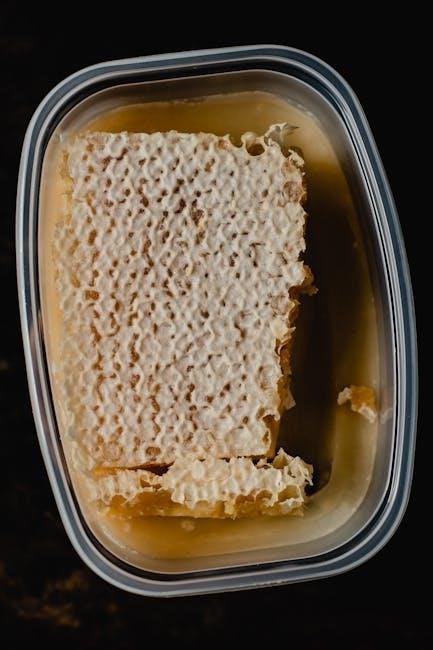
Maintenance and Management of Stingless Bee Hives
Regular inspections‚ cleaning‚ and monitoring hive health are crucial for maintaining thriving stingless bee colonies. Proper management ensures optimal conditions for honey production and colony survival.
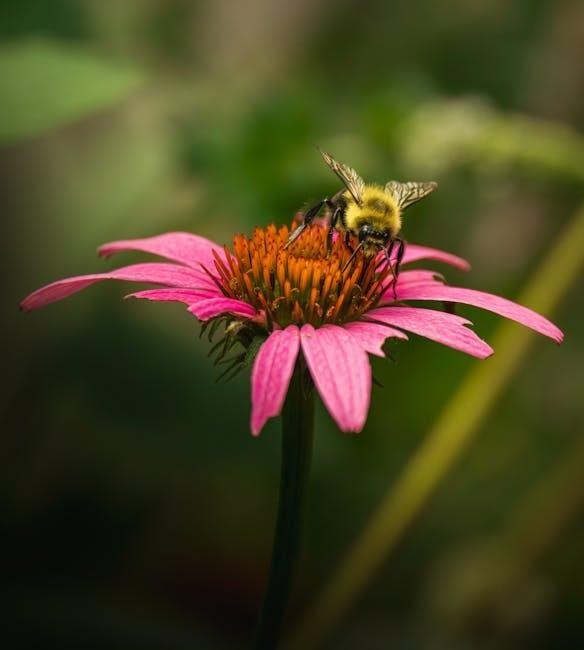
Regular Inspections and Monitoring Techniques
Regular inspections are essential for maintaining healthy stingless bee colonies. Beekeepers should monitor hive activity‚ checking for signs of pests‚ diseases‚ and nutritional issues. Observing bee behavior‚ such as foraging patterns and hive entrance activity‚ provides insights into colony health. Internal inspections involve examining honey pots‚ brood combs‚ and ensuring proper hive structure. Tools like magnifying glasses and hive record-keeping aid in early detection of problems. Monitoring environmental conditions‚ such as temperature and humidity‚ also plays a role in maintaining optimal hive health. Regular checks help prevent issues before they escalate‚ ensuring the colony thrives and remains productive.
Pest and Disease Control Strategies
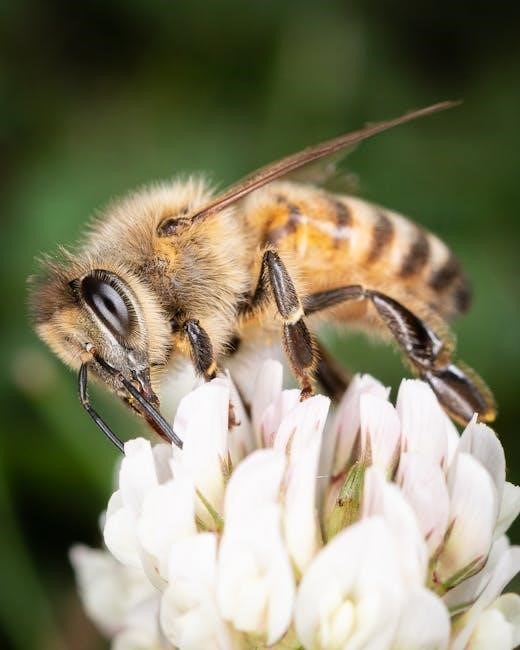
Pest and disease control is critical for maintaining stingless bee hive health. Common threats include Varroa mites‚ small hive beetles‚ and fungal infections. Integrated Pest Management (IPM) approaches are recommended‚ combining hive design modifications with natural control methods. For example‚ screened hive bottoms can help reduce parasite infestations by allowing debris to fall out. Regular inspections and monitoring are vital to detect issues early. Natural treatments‚ such as essential oils and organic acids‚ can be effective. Additionally‚ maintaining strong colony populations through proper nutrition and stress reduction helps bees resist pests and diseases. Educating beekeepers on identification and prevention strategies is key to protecting these valuable pollinators and ensuring hive longevity.
Feeding and Nutrition Management for Healthy Colonies
Proper feeding and nutrition are essential for the health and productivity of stingless bee colonies. Hives should be positioned in areas rich with diverse nectar and pollen sources to ensure a balanced diet. Supplementary feeding‚ such as sugar solutions or pollen substitutes‚ may be necessary during times of scarcity. Nutrient-rich hive designs that incorporate natural materials can support colony health. Regular monitoring of food stores is crucial to prevent starvation‚ especially in temperate climates. Adequate water sources near the hive also promote colony well-being. A well-nourished colony is better equipped to resist pests and diseases‚ ensuring optimal honey production and hive longevity. Proper feeding strategies are a cornerstone of successful stingless beekeeping practices.
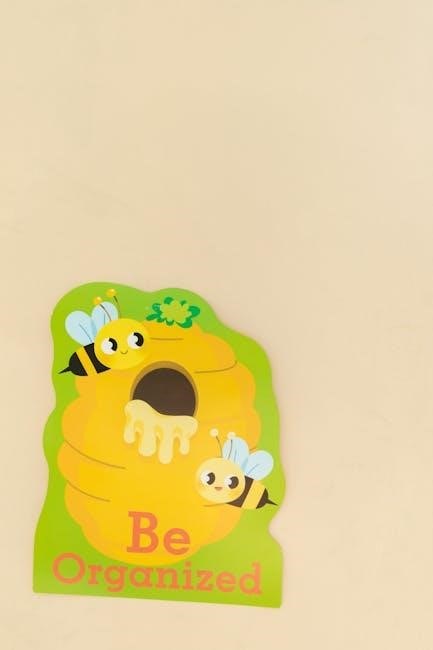
Harvesting Honey and Propolis from Stingless Bee Hives
Harvesting honey and propolis from stingless bee hives requires careful methods to avoid damaging the colony. Techniques involve timing‚ tools like smokers‚ and sustainable practices to ensure hive health and quality honey production.
Methods for Safely Harvesting Honey
Harvesting honey from stingless bee hives requires precise methods to ensure colony safety and honey quality. Smokers are often used to calm bees‚ while protective clothing minimizes stings. Hive designs with removable honey storage compartments allow beekeepers to extract honey without disturbing the brood comb. Timing is crucial‚ as harvesting during peak nectar flows ensures high-quality honey. Tools like centrifuges or manual extraction methods are employed‚ depending on hive design. It’s essential to leave enough honey for the colony’s survival‚ balancing human needs with ecological sustainability. Proper techniques prevent damage to the hive structure and maintain colony health for future production.
Best Practices for Propolis Extraction
Propolis extraction from stingless bee hives requires careful techniques to preserve quality and avoid harming the colony. Timing is key‚ as propolis is typically abundant during active foraging periods. Beekeepers often use specialized tools‚ such as scrapers or heat-controlled devices‚ to gently remove propolis without damaging the hive structure. Sterilization of tools is crucial to prevent contamination and maintain the integrity of the propolis. It’s important to leave a sufficient amount of propolis in the hive to ensure the colony’s health and structural integrity. Proper storage in airtight containers and cool environments helps retain its medicinal properties. These practices ensure sustainable extraction while respecting the colony’s ecological balance.
Timing and Frequency of Harvesting
Timing and frequency of harvesting are critical to ensure the sustainability of stingless bee colonies. Honey and propolis should only be harvested when the colony is strong and resources are abundant‚ typically during peak nectar flows. Over-harvesting can weaken the colony‚ so beekeepers must monitor hive health closely. The frequency of harvesting varies by species and climate‚ with most hives requiring only 1-2 harvests per year. Proper scheduling ensures that enough honey remains for the colony’s needs‚ especially during food-scarce seasons. This balanced approach protects the colony while providing a steady yield for beekeepers‚ promoting both ecological and economic sustainability. Regular inspections help determine optimal harvest times‚ ensuring the colony’s well-being is prioritized.
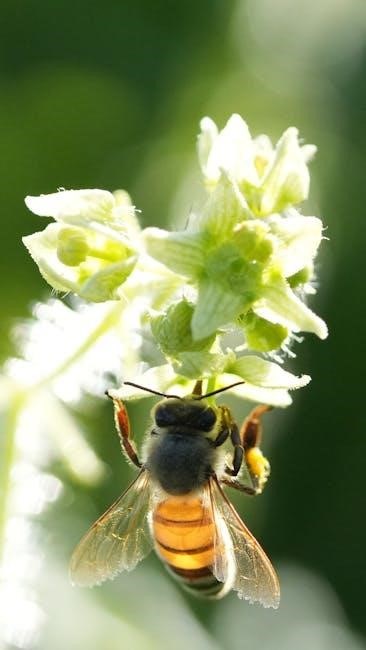
Case Studies and Examples of Successful Hive Designs
Successful hive designs include traditional Australian and modern innovations‚ such as the Temperate Climate (TC) hive‚ which mimics natural nesting sites‚ enhancing colony survival and productivity globally.
Traditional Hive Designs from Around the World
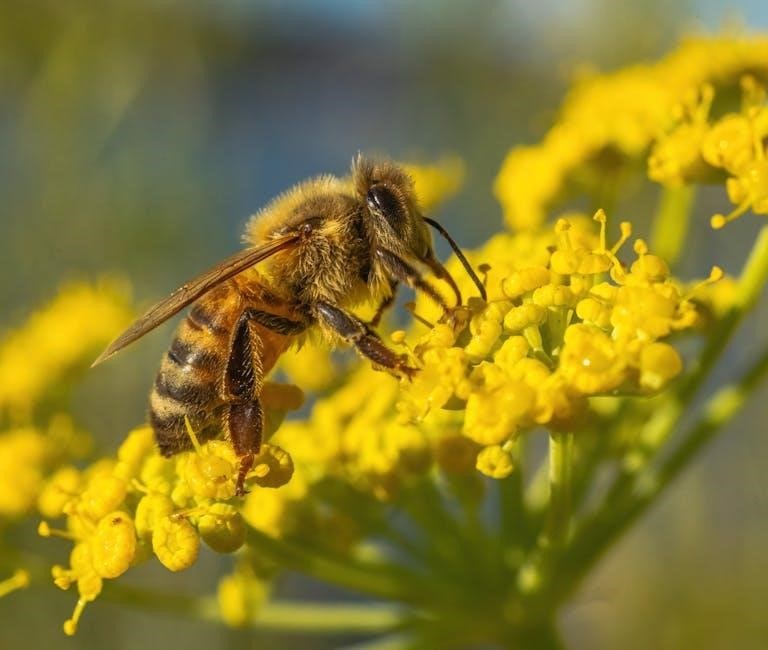
Traditional stingless bee hive designs vary globally‚ reflecting local materials and cultural practices. In Australia‚ Indigenous communities historically used hollow tree logs‚ while African designs often utilized gourds or bamboo. In Asia‚ hive designs incorporated natural fibers and ceramics. These traditional methods emphasize sustainability and harmony with the environment. For example‚ the “UTOB hive” in some regions uses shallow drawers for pot construction‚ adapting to the bees’ natural nesting habits. Such designs inspire modern hive architecture‚ blending ancient wisdom with contemporary innovations to promote pollinator health and ecological balance. These traditional designs highlight the diversity of stingless beekeeping practices worldwide.
Modern Innovations in Stingless Bee Hive Architecture
Modern innovations in stingless bee hive architecture focus on improving colony health and honey production while addressing environmental challenges. Designs like the Temperate Climate (TC) hive adapt to regions beyond the bees’ natural range‚ mimicking their natural nesting sites. Clear visibility hives enable ecological studies without disturbing the colony. Smart technology integration‚ such as sensors‚ monitors hive conditions‚ optimizing management. Additionally‚ 3D printing allows for customizable hive structures‚ enhancing durability and bee comfort. These advancements aim to balance tradition with innovation‚ ensuring sustainable beekeeping practices. Such designs not only aid in colony survival but also promote stingless beekeeping globally‚ addressing modern challenges while respecting the bees’ ecological needs.
Community Projects and Collaborative Hive Design Efforts
Community projects and collaborative efforts are driving innovation in stingless bee hive design‚ fostering sustainable pollinator conservation. Initiatives like the Ku-ring-gai program and urban hive installations engage local communities‚ promoting native pollinators. Collaborative design efforts bring together beekeepers‚ researchers‚ and artisans to create eco-friendly hives. Educational workshops and online forums share knowledge‚ empowering enthusiasts. Such projects emphasize the importance of stingless bees in biodiversity and food security. By uniting diverse stakeholders‚ these efforts ensure culturally appropriate and environmentally sustainable hive designs. They also inspire urban beekeeping‚ reintroducing native pollinators to cities. These collective endeavors highlight the value of community-driven solutions in protecting stingless bee populations and their habitats.
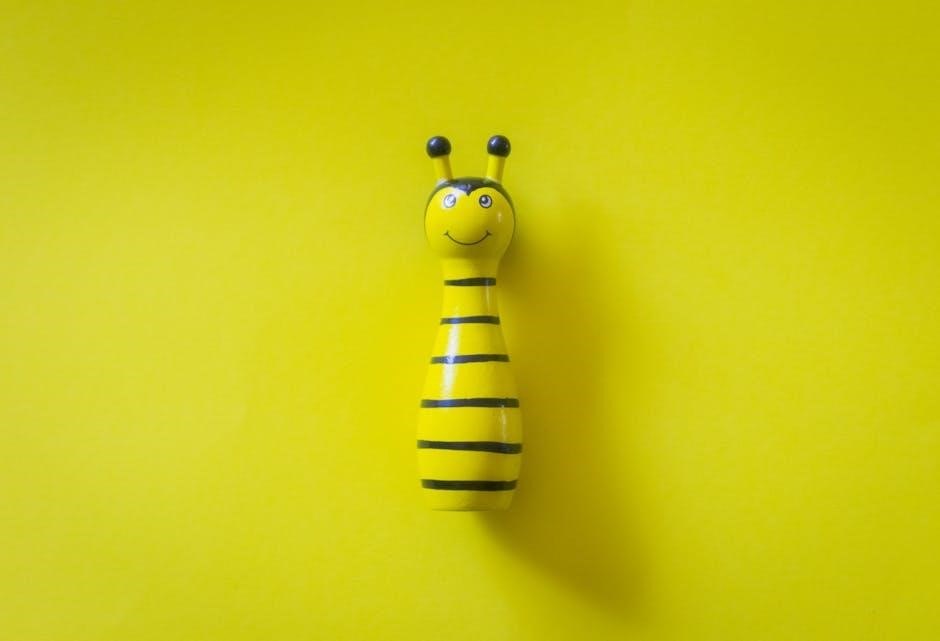
Challenges and Solutions in Stingless Bee Hive Design
Challenges include swarming control‚ pest management‚ and climate adaptability. Solutions involve innovative hive models‚ sustainable materials‚ and designs that mimic natural nesting sites for colony resilience.
Common Issues Faced by Beekeepers
Beekeepers encounter challenges such as swarming‚ colony management‚ and pest infestations. Varroa mites and toxic pesticides pose significant threats‚ requiring careful hive design adaptations. Climate-specific designs often fail to address regional needs‚ while materials may lack durability. Harvesting methods can disrupt colonies‚ and maintaining hive health demands precise monitoring. Additionally‚ the balance between honey production and colony survival remains a critical concern. Addressing these issues ensures sustainable beekeeping practices and thriving stingless bee populations.
Innovative Solutions for Hive-Related Problems
Innovative hive designs address challenges like climate adaptability and pest control. The Temperate Climate (TC) hive mimics natural nesting sites‚ enhancing colony survival. The UTOB hive allows efficient harvesting without damaging brood comb. Smart technology integration monitors hive conditions‚ optimizing management. Materials like durable plastics and natural woods improve hive longevity. Designs enabling clear visibility facilitate ecological studies. These advancements ensure sustainable beekeeping‚ balancing honey production with colony health. By integrating biology with technology‚ modern hive designs pave the way for thriving stingless bee populations in diverse environments.
Lessons Learned from Failed Hive Designs
Failed hive designs have revealed critical lessons for stingless beekeeping. Poor material choices‚ inadequate ventilation‚ and insufficient space for honey storage and brood areas often lead to colony decline. Designs not aligned with local climates or bee behavior frequently fail. Overly complex structures can hinder maintenance and harvesting. Additionally‚ ignoring the bees’ ecological needs‚ such as nesting preferences‚ disrupts colony health. These failures emphasize the importance of understanding stingless bee biology and adapting designs to their specific requirements. By learning from these mistakes‚ beekeepers can create more effective‚ sustainable hives that support thriving colonies and maximize honey production while ensuring the well-being of these vital pollinators.
Future Trends in Stingless Bee Hive Design
Future trends emphasize sustainable‚ eco-friendly materials and smart technology integration‚ enhancing hive efficiency and colony health. Innovations like climate-resilient designs and advanced monitoring systems will shape modern beekeeping practices.
Technological Advancements in Hive Construction
Technological advancements are revolutionizing stingless bee hive construction‚ with innovations like smart sensors and IoT integration enabling real-time monitoring of hive conditions. PDF resources detail how 3D printing and precision engineering create customizable‚ eco-friendly hives tailored to specific climates. These designs incorporate materials that enhance thermal regulation and durability‚ ensuring optimal colony health. Advanced hive models‚ such as the Temperate Climate (TC) hive‚ mimic natural nesting sites‚ promoting colony survival in diverse environments; Additionally‚ the UTOB hive design allows for efficient honey harvesting while preserving brood combs. Such technological strides are paving the way for sustainable and efficient stingless beekeeping practices globally.
Sustainability and Eco-Friendly Hive Materials
Sustainability is a cornerstone of modern stingless bee hive design‚ with eco-friendly materials playing a crucial role. PDF resources emphasize the use of natural materials like untreated wood‚ bamboo‚ and recycled plastics to minimize environmental impact. These materials not only align with the bees’ natural habitats but also ensure durability and weather resistance. Biodegradable options are increasingly popular‚ reducing the carbon footprint of hive construction. Additionally‚ designs often incorporate locally sourced materials‚ promoting regional sustainability and reducing transportation emissions. By prioritizing eco-friendly materials‚ beekeepers can support healthier colonies while contributing to environmental conservation. This approach ensures that hive construction is both sustainable and harmonious with nature;
Integration of Smart Technology in Hive Management

Smart technology is revolutionizing stingless bee hive management‚ offering tools for efficient monitoring and care. PDF resources highlight innovations like sensors that track temperature‚ humidity‚ and hive activity‚ enabling beekeepers to respond promptly to changes. Automated systems can alert managers to potential issues‚ such as pest infestations or nutrient deficiencies. Additionally‚ smart hive designs integrate data collection platforms‚ providing insights into colony health and behavior. This technology not only enhances productivity but also supports conservation efforts by ensuring optimal conditions for stingless bees. By leveraging smart solutions‚ beekeepers can achieve better outcomes while reducing manual labor‚ making hive management more precise and sustainable.
Stingless bee hive design integrates biological insights with innovative construction‚ promoting colony health‚ sustainable honey production‚ and climate adaptability‚ while driving future advancements in beekeeping practices.
Stingless bee hive design combines biology‚ materials science‚ and environmental adaptability to optimize colony health and productivity. PDF resources emphasize understanding bee behavior‚ using natural materials‚ and adapting designs to various climates. Key insights include the importance of hive structure for honey storage and brood development‚ as well as innovations like the Temperate Climate hive‚ which mimics natural nesting sites. Community projects highlight collaborative efforts to reintroduce native pollinators‚ while technological advancements promise smarter hive management. Sustainable practices and eco-friendly materials are central to future designs‚ ensuring these pollinators thrive in diverse environments.
Final Thoughts on the Importance of Hive Design
Hive design plays a pivotal role in the survival and productivity of stingless bee colonies‚ balancing tradition with innovation. PDF resources underscore the need for climate-specific adaptations and sustainable materials‚ ensuring colonies thrive in diverse environments. By prioritizing colony health and ecological harmony‚ well-designed hives support pollination efforts and honey production. Future designs must integrate smart technologies and eco-friendly practices to address global challenges. Stingless bee hive design is not just about structure—it’s about preserving these vital pollinators for generations to come‚ highlighting the importance of continued research and community collaboration in hive architecture.
Encouragement for Further Exploration and Innovation
The future of stingless bee hive design lies in innovation and collaboration‚ driven by a growing understanding of these pollinators’ needs. PDF resources highlight the potential for integrating smart technologies and eco-friendly materials to enhance hive sustainability. Encouraging researchers‚ beekeepers‚ and communities to explore new designs can lead to groundbreaking solutions. By fostering a culture of experimentation and knowledge-sharing‚ we can address climate challenges and improve colony health. Embracing creativity and science will ensure the long-term survival of stingless bees‚ benefiting both ecosystems and honey production. Let us continue to innovate and adapt‚ inspiring future generations to protect and cherish these vital pollinators.
